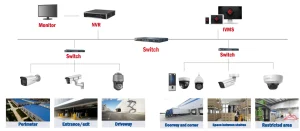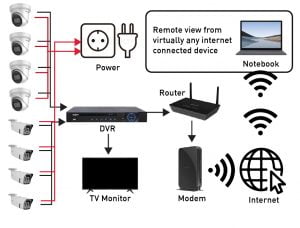Installation Techniques for a CCTV System on Construction Sites
First Step:
Design a diagram. You are already aware of the main components of your surveillance requirements and the best locations for your cameras. Assigning a camera to every square inch of the building site is unrealistic and expensive, so prioritize the locations you want to be constantly observed, such the materials/supply corner. Have a copy of your building’s blueprint, then mark the corners where you wish to install the cameras. As soon as it’s finished, inspect each area to make sure there are no obstructions of any kind and to determine whether it could offer the finest view.

Second Step:
Purchase the required CCTV packages as the second step. Make sure the system you purchase will work for you. There are certain cameras that you can purchase separately, but buying bundled cameras is typically simpler and less expensive. The most effective cameras are wireless ones since you need to keep an eye on a large region. Because of the tough environment seen on construction sites, make sure to get camera shields and wall mounts.

Third Step:
Connect the camera to the DVR. Every piece of surveillance gear connects to the NBC (Bayonet Neill-Concelman). These cables are easy to use, pleasant, and typically similar on both sides. All you have to do to lock it in is connect it into the proper port and spin a little nut all the way around.
Fourth Step:
Connect the cameras to the computer. To access feeds, you must install the disc that is included with wireless cameras. To access the cameras after installing the program, follow the prompts on your screen. Some cameras feature tiny receivers that you must connect to the computer using a USB connection in order to use them. If so, be certain that it is securely fastened. If supplied, note the IP addresses of the cameras, such as 192.168.0.5. Any browser may be used to enter this number to see cameras remotely.
Fifth Step:
Call a construction security expert to put up a system customized for your building. However, it costs more than a conventional DIY installation because many of these security firms also install motion sensors and an automatic emergency call specifically for you.

